Tom and I have been doing a variety of miscellaneous jobs at Fort Frederica National Monument this year. I have more of a routine than Tom does because he usually tries to avoid working at the Visitors Center. This year he has been less successful at that than in years past.
My work week basically goes like this: Thursday is all day in the Visitors Center. When we have enough staff, we have one person inside the Visitors Center and one person outside greeting. Tom and I both think that the people who are working should be interacting with visitors most of the time – not reading a book or on a cell phone. Sometimes our rangers and other volunteers don’t take this viewpoint. We have been so busy at the Fort that Tom has spent a lot of time being the greeter.

On Fridays I work in the Visitor Center again in the morning and then go out and pick up the roads when local volunteer George comes in the afternoon. On Friday afternoons I might also work on warping my loom if I am between projects.
Saturday and Sunday are our living history days. I usually cook one of those two days. I have been making lots of soups, rolls, cornbread, pies, and cakes. It was nice when the Jennings were here because Susan cooked every other week. Cooking is the hardest physical work for living history. Not only am I working with the fire, but there is lots of heavy lifting with the pots, kettles, and skillets. I cook for us but also for the rangers and the other volunteers. Last Saturday that was close to 20 people. After I am done cooking I still have to wash the dishes, which can be quite a chore. But people really enjoy seeing what I am cooking over the open fire. I’ve even had people stand and watch me wash the dishes!
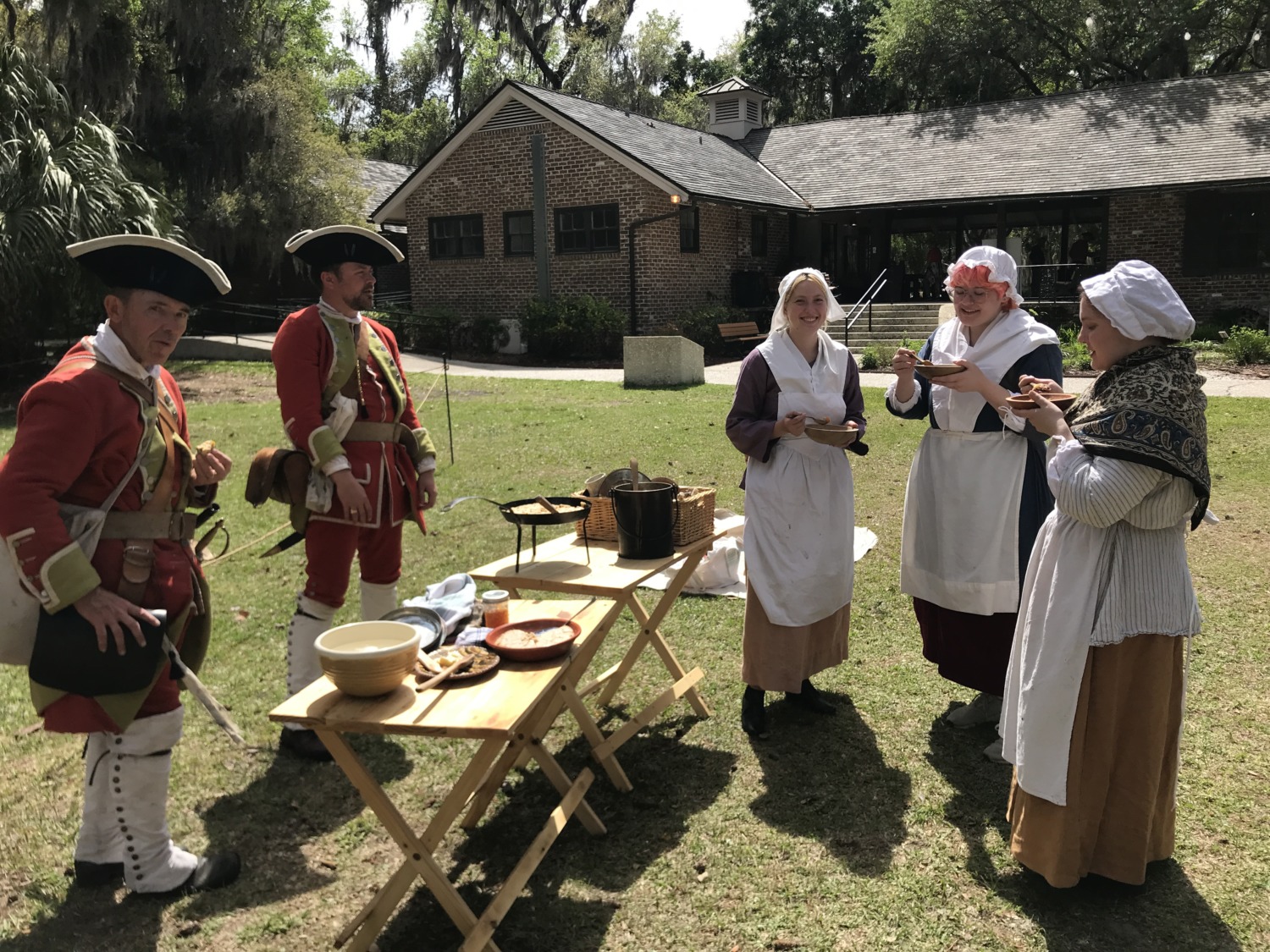
I much prefer the living history days when I don’t cook. On those days I haul out all my textile stuff: loom, spinning wheel, weasel, and my bin of fiber processing. I get to sit down when I am spinning or weaving, which is a nice change from the constant standing of cooking days. I also spend a lot of time talking about the palmetto hut, the bake oven, and the colonial garden.
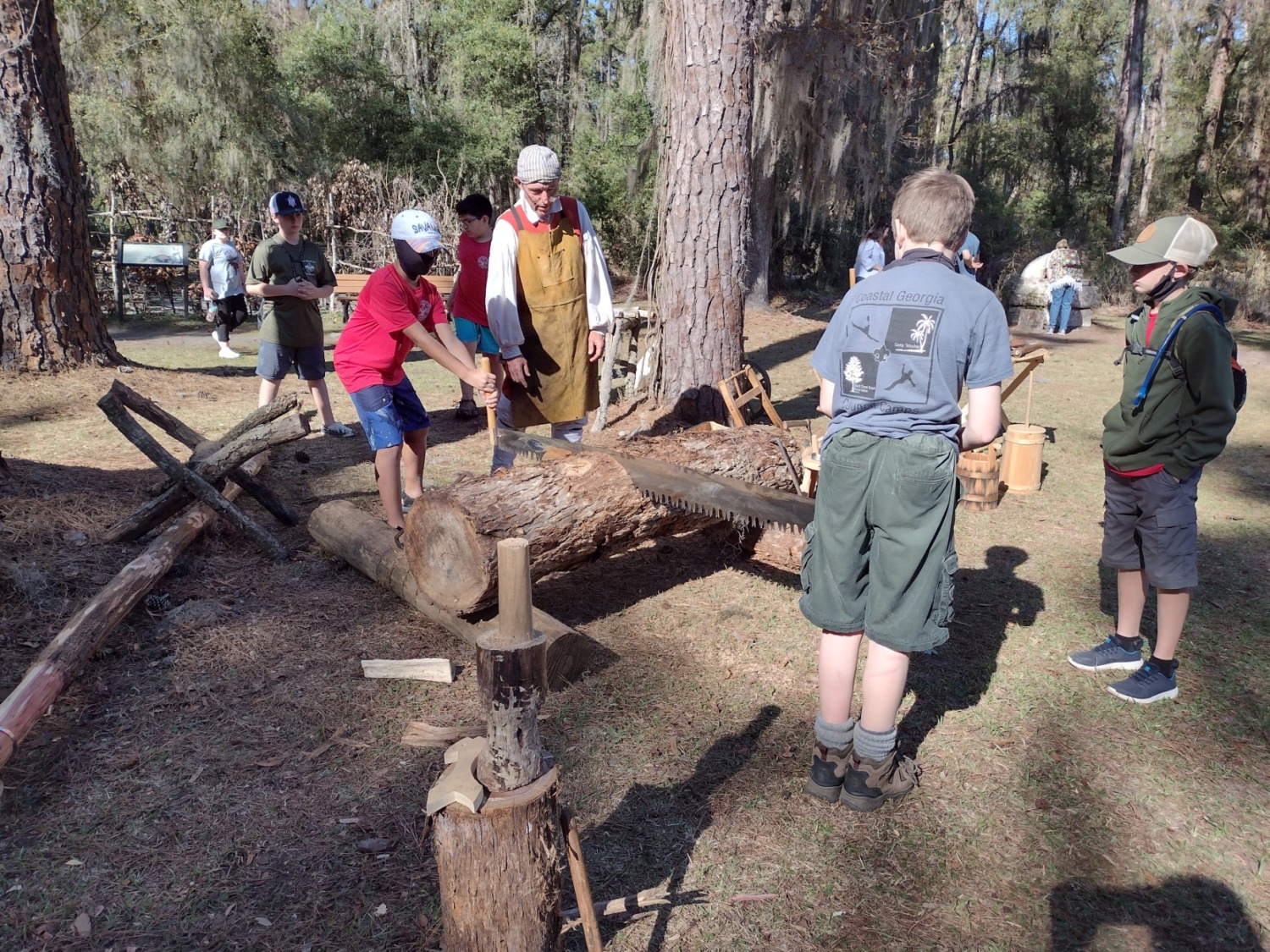
Tom has done a variety of demonstrations on living history days. He has been a blacksmith, cooper, and carpenter. He also, usually when I cook, talks about being a soldier and tends the fire. Tom offers to cook to give me a break, but he talks so much that he doesn’t tend the food. Then I end up doing it anyway.
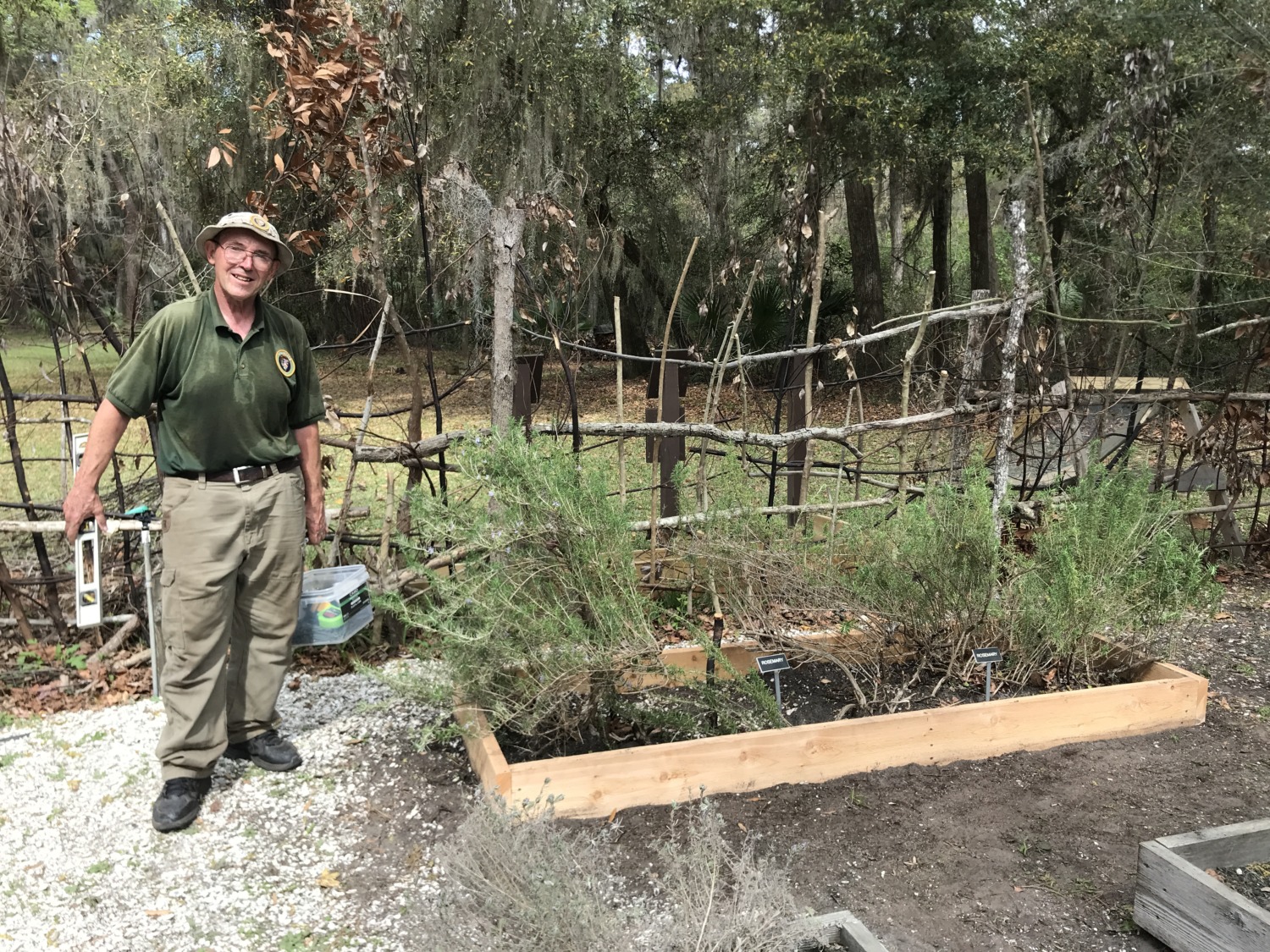
So where do the miscellaneous jobs come in? We fit them in while other people are tending the Visitors Center or greeting. We also do some of them on our days off. Tom, especially, likes to keep busy and usually has a list of things to do on his days off. He has repaired the park’s wooden buckets, built a bridge, polished hooks, and repaired the thatch on the palmetto hut. The park supervisors ordered a big tent to protect against bad weather on special days and he helped set that up. As soon as they had it set up and saw that all the parts were there, however, it came down again. He has also done lots of the work of setting up for special days.
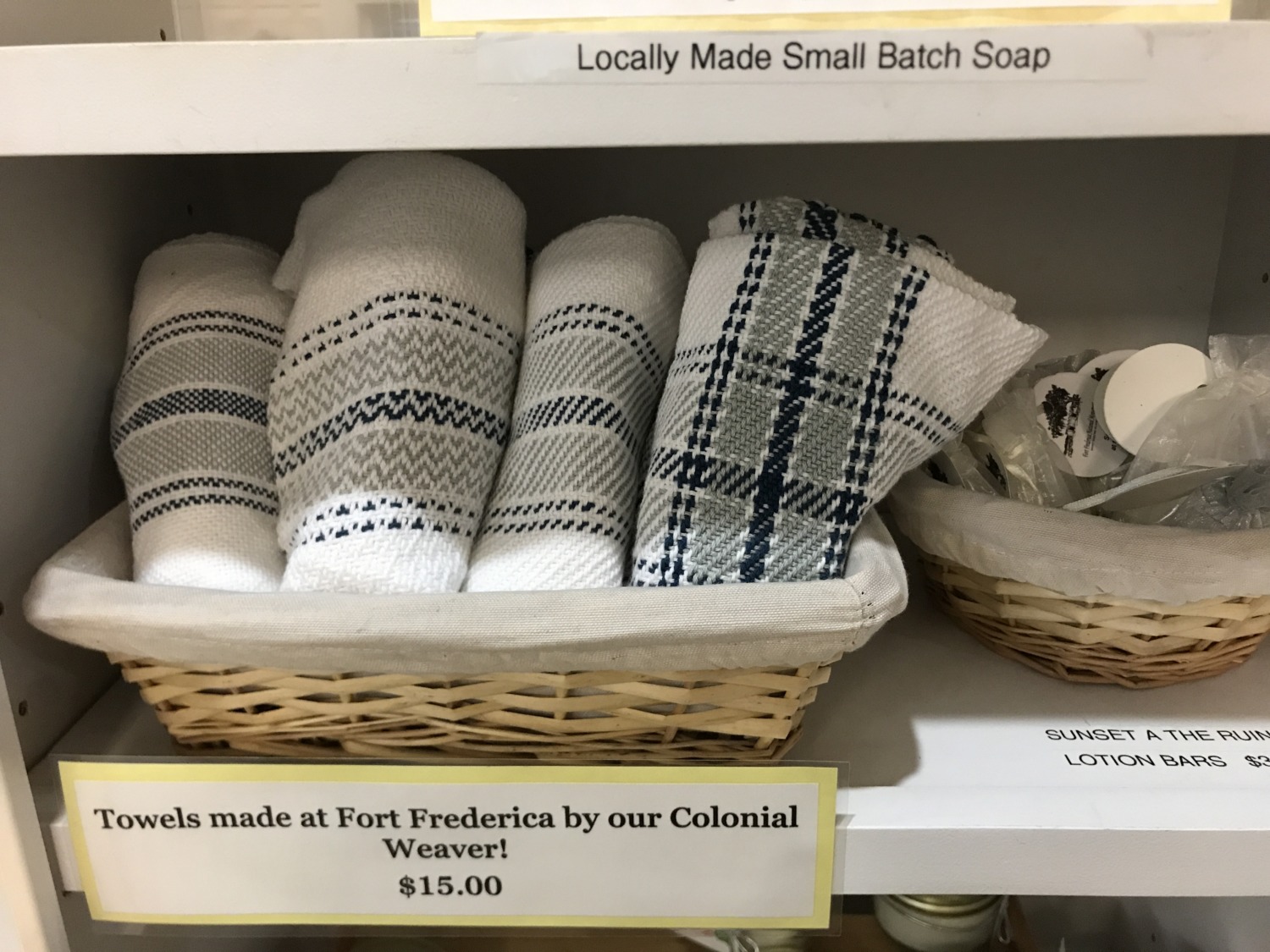
This year, for the first time, I sold some of the towels that I wove while I was doing living history. When I am weaving I always have people ask if I sell what I weave. I generally don’t, because I’m not that good a weaver, but so many people asked that I gave seven of my towels to the bookstore manager. They sold in a week, and I could have sold a bunch more. Tom has been selling hooks that he makes as a blacksmith for several years.

These things are especially popular on days when we are out doing the activities in living history. We don’t get any profit from them – the park pays for our materials and then gets the profit on what is sold. I had one lady who was so upset that that the bookstore was out of my towels that I ended up giving her an extra towel that I had. She made a donation to the park.

In addition to all of these miscellaneous jobs, we have also done a lot of Covid-related sanitizing. Every morning we walk around spraying Lysol on all the things that people touch during the day. We keep the facemasks stocked and, until a few weeks ago, had to remind people that facemasks were required in the buildings. We had a little party on March 11 when Glynn County fell below the high transmission standard and we could stop requiring facemasks in the buildings. Tom and Ranger Bob were very happy ripping off the tape that blocked off seats in the theater for two years.
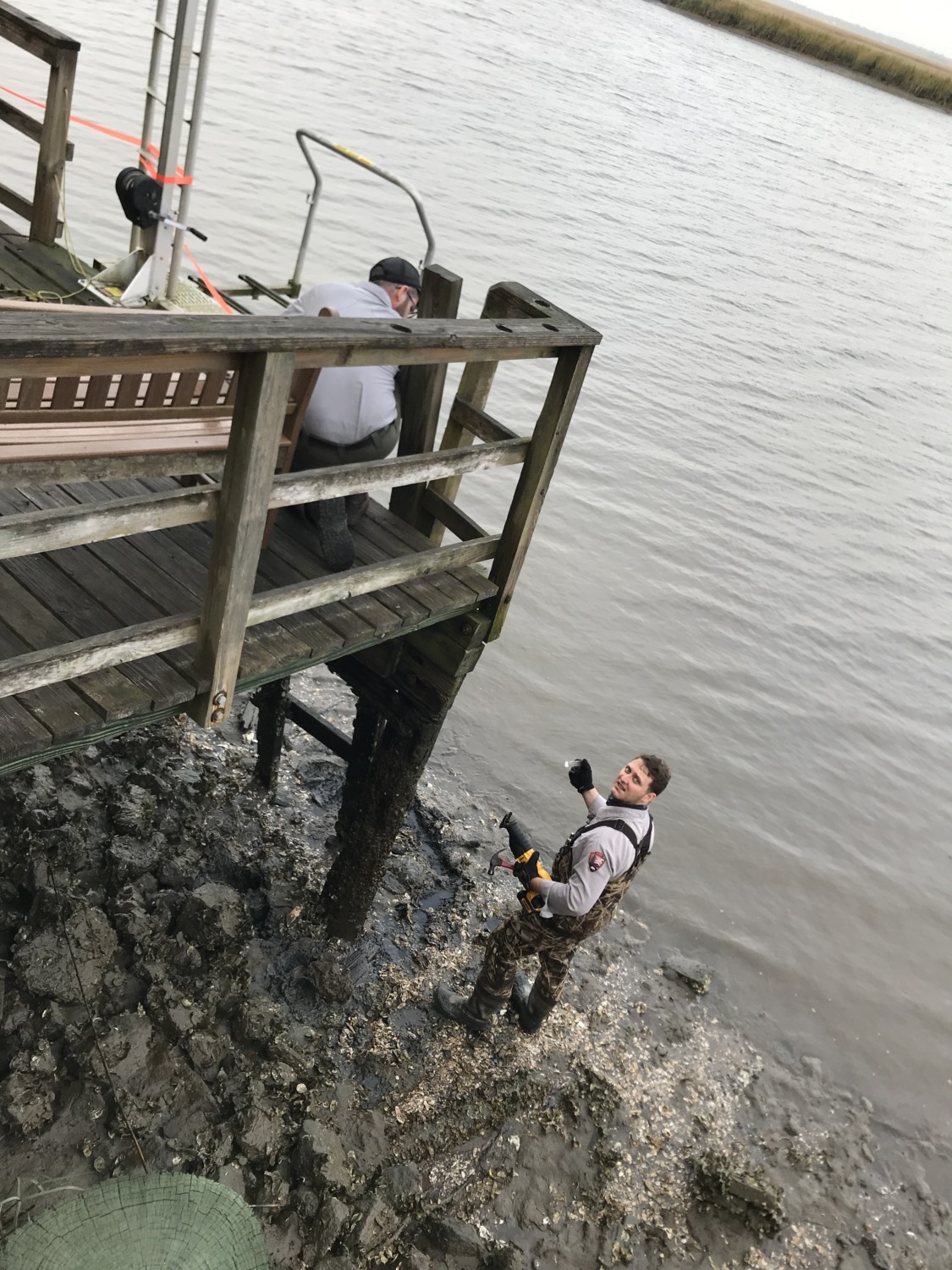
One of the fun things is seeing what everyone else is doing here at the park. This is the first time we have had a full maintenance staff since we have been here. The three maintenance rangers, along with four RV maintenance volunteers, make quick work of most of the maintenance jobs. I spotted Ranger Davis down in the mud fixing the dock two different times. And one day, after spending the day splitting wood for a special event, all the rangers carved their names into wooden stumps just to let off a little steam.
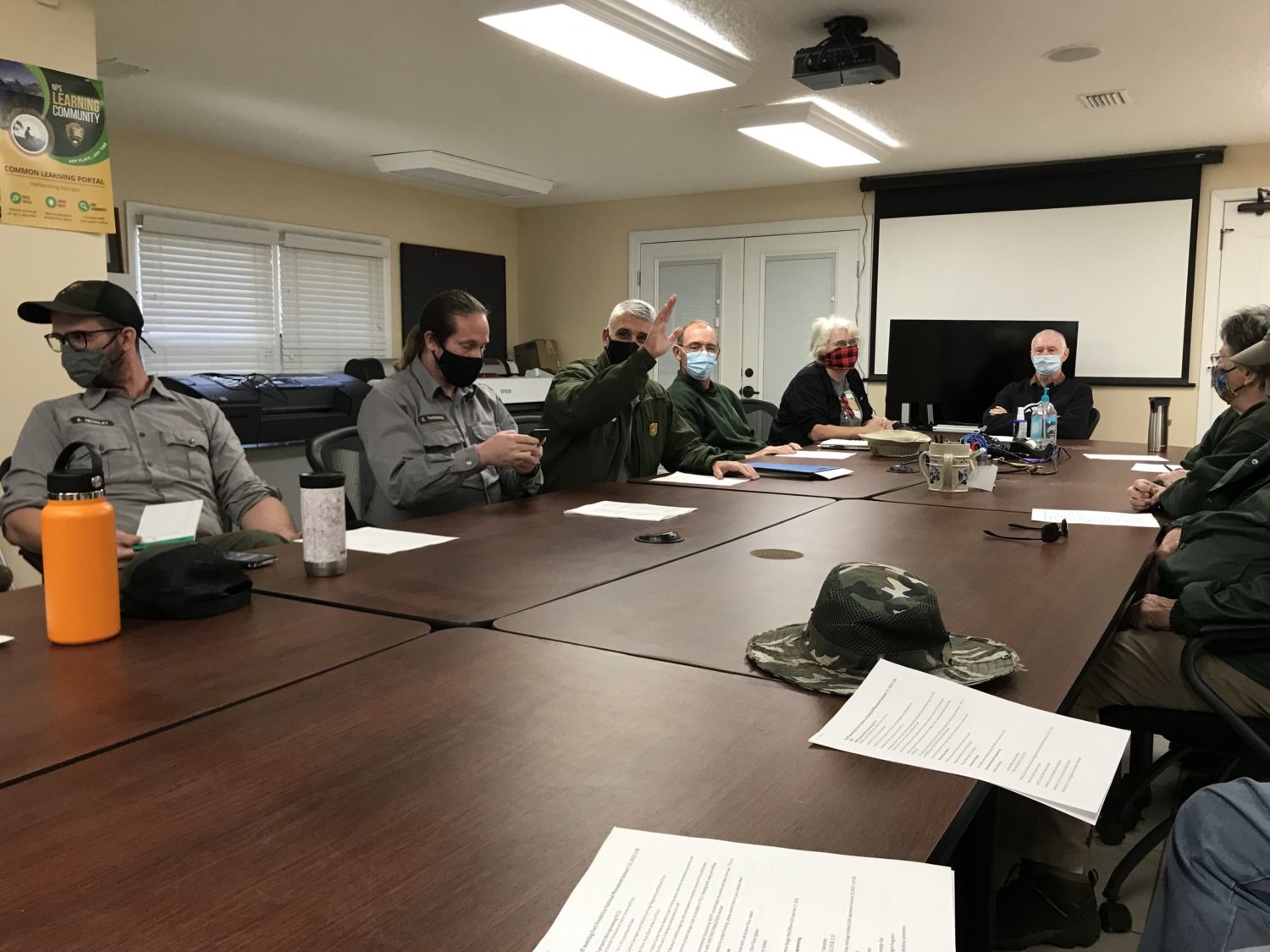
Another miscellaneous job is going to all-staff meetings. These meetings are attended by everyone who works in the park and all the supervisors. This is not our favorite thing to do, but the meetings have been limited to once a month and an hour at a time. We can tolerate that. The rangers have spent a lot more time in meetings, making us glad we are volunteers and not rangers.
I’m sure I have forgotten some of our miscellaneous jobs. Tom has a better list, but you get the idea. There is always plenty to fill our days and we enjoy the variety and challenge. It keeps us coming back.
